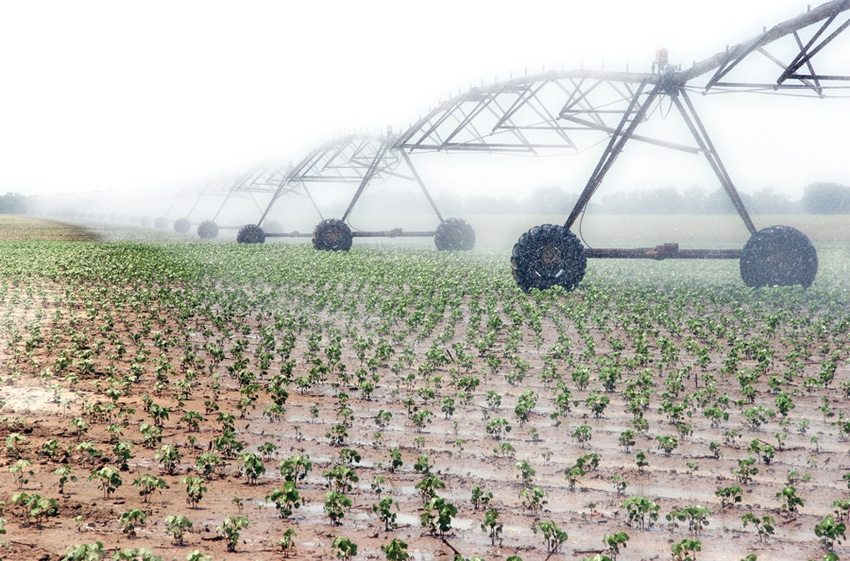June 15, 2011

Managing Arkansas’ late cotton crop to maintain high yield potential will require timely management decisions. Irrigation comes to the top of that list as we move into weeks of 90+ degree weather and little rain in the forecast.
We are trying to speed this crop up to maturity and remove stresses that will lead to further delays. Over the last four years in our irrigation work, we have been able to gain an extra node at flowering by watering one week earlier.
The cotton was approximately nine to 10 nodes when we initiated the early irrigation treatment, and at flowering, the early-irrigated cotton was 10 inches taller and bloomed with 9 NAWF (nodes above white flower), while the cotton where irrigation was delayed for one week, bloomed with only 7 NAWF.
The moral of the story is to be prepared to water before cotton growth slows. By watering on time, we were able to prevent drought stress that ultimately delayed the cotton further.
Keep in mind that this crop may have a shallow root system from early-season stresses. In the fields where the tap roots are permanently damaged from cool soil temperatures and seedling disease, timely irrigation will be critical.
Cotton water demand prior to squaring is generally less than 0.10 inch per day. However, once the plants begin to square, the demand goes up from 0.10 to 0.25 inch per day as the plant biomass and square number increases.
Because we are behind this season, it is important to keep this seedling cotton growing and buy some time that we lost early on. With current temperatures, we are accumulating enough heat units to grow a new node every two and a half to three days.
Monitor your fields closely, and if the seedling cotton is not growing a new node at this pace, supplemental irrigation is needed.
Irrigation will also be needed in many fields to activate residual herbicides and move nitrogen into the soil solution. Nitrogen applications into dry dirt or dust will not be available for plant uptake.
If you recall 2010, we received no rain in June and almost all furrow-irrigated fields were streaked because nitrogen was not activated in every row.
Unfortunately, if no rain is received on furrow-irrigated fields, every row will need to be watered the first time to activate the applied nitrogen more efficiently.
You May Also Like




